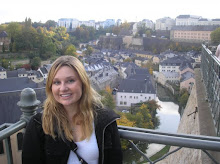 The history of the city of Frankfurt am Main is the story of a hill at a ford in the Main that developed into a European banking metropolis, becoming the smallest metropolis in the world.
The history of the city of Frankfurt am Main is the story of a hill at a ford in the Main that developed into a European banking metropolis, becoming the smallest metropolis in the world. In 1933 the Jewish mayor (Oberbürgermeister) Ludwig Landmann was replaced by NSDAP member Friedrich Krebs. This led to the firing of all Jewish officials in the city administration and from city organizations. A meeting of Frankfurt traders, who wanted to discuss the boycott of Jewish businesses, was broken up and the participants arrested and intimidated. On September 23 work started on the first German highway, the Reichsautobahn, between Frankfurt-Niederrad and Darmstadt. Although the Nazis had originally mocked the city as the Jerusalem am Main because of its high Jewish population, the city adopted a propagandistic nickname, the Stadt des deutschen Handwerks or the city of German craft. Large parts of the city center were destroyed by numerous air raids.
On March 22, 1944, a British attack destroyed the entire Old City, killing 1001 people. The East Port - an important shipping center for bulk goods, with its own rail connection - was also largely destroyed. The heavily destroyed city decided in the spirit of the time to plan a major reconstruction of the historical city center, retaining the old road system. The formerly independent city republic joined the state of Hesse in 1946. As the state capital was already at the smaller city of Wiesbaden and the American armed forces had used Frankfurt as their European headquarters, the city seemed most promising candidate for the West German federal capital. The American forces even agreed to withdraw from Frankfurt to make it suitable, as the British forces already had withdrawn from Bonn. Much to the disappointment of many in Frankfurt, however, the vote narrowly favored Bonn twice. Despite this, the mayor looked towards the future, seeing that with the division of Germany and relative isolation of Berlin, Frankfurt could take over positions in trade and commerce previously filled by Berlin and Leipzig. Since Bonn never played an important role despite its status as capital, Frankfurt, Hamburg, and Munich realigned themselves, passing from regional centers to international metropolises and effectively forming three West German cultural and financial capitals.
Since the turn of the 2th century century, the Frankfurt fair has been held every fall and had become the most important fair site in Europe. Frankfurt's countless publishing houses as well as its fur industry profited from the elimination of Leipzig by the division of Germany into East and West. After the war, the West German book fair was held in Frankfurt. Since German reunification, the Frankfurt Book Fair is held in the fall, and Leipzig's in the spring. The bi-annual Internationale Automobil-Ausstellung is a worldwide car fair that is also held in Frankfurt. The Deutsche Bundesbank made Frankfurt its seat, and most major banks followed suit. This and the Frankfurt Stock Exchange have made the city the second most important commercial center in Europe, after London.







2 comments:
You hit German restaurants right on the head!
You hit German restaurants right on the head!
Post a Comment